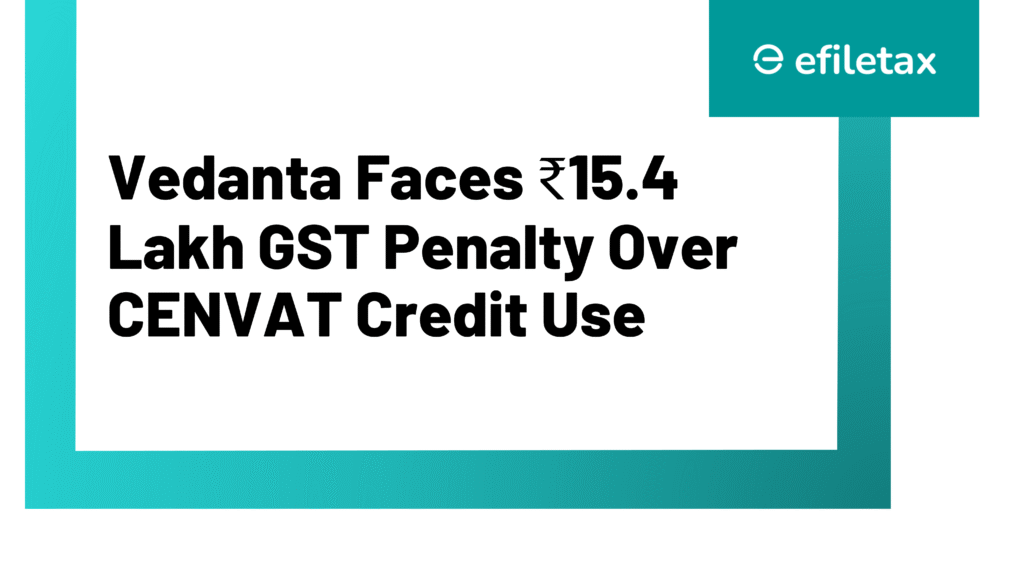
Vedanta GST Penalty: Why ₹15.4 Lakh Was Imposed Over CENVAT Credit
Vedanta’s ₹15.4 lakh GST penalty has reignited a critical discussion around transitional credit misuse and legacy tax liabilities. The case stems from Vedanta’s attempt to use CENVAT credit to discharge excise duty, a move that the tax authorities held to be incorrect.
Let’s break down the issue, the legal reasoning, and what other taxpayers must learn to stay compliant.
What is CENVAT Credit and Where Did Vedanta Go Wrong?
However, the Finance Act, 2022 introduced retrospective amendments (w.e.f. 01.07.2017) that restricted the usage of such credits.
In Vedanta’s case:
- The company attempted to utilise CENVAT credit lying in its books to pay off excise duty demand raised post-GST.
- Authorities argued this was not permitted, especially when the tax liability was determined under Rule 8(3A) of Central Excise Rules, 2002, which prohibits use of CENVAT credit in certain default situations.
Key Legal References
- Finance Act, 2022 (Section 114): Validated such demands retrospectively, overriding judicial precedents that favoured taxpayers.
Impact of Vedanta’s Case for Other Businesses
If your business had pending CENVAT credits or excise duty liabilities during the transition to GST, here’s what you must keep in mind:
✅ Don’t use CENVAT to pay past excise dues raised under Rule 8(3A)
✅ Transitional credit must comply with Rule 117 of CGST Rules and circulars
✅ Penalty and interest can apply even post-GST, for legacy dues
Expert View: One Practical Tip
Many companies misinterpret the transitional provisions. Even if credit exists in books, its usage depends on how and when the liability arises. Always verify whether the demand is under general provisions or punitive rules like 8(3A).
Tip:
File a legal review request for any pre-GST demand before deciding to adjust it using credit.
Summary
The case highlights risks for businesses handling pre-GST tax dues and underscores the importance of proper compliance under transitional tax laws.
FAQs
Q1. Can CENVAT credit be used to pay old excise dues?
Not in all cases.
Q2. Is transitional credit still usable under GST?
Only if it was correctly declared in TRAN-1 and meets all CGST Rule 117 conditions.
Q3. Will this affect GST input credit too?
Not directly. But misuse of legacy credits can invite scrutiny under both GST and legacy laws.
Final Thoughts
The Vedanta GST penalty serves as a cautionary tale. Businesses must audit their transitional credit usage and avoid assumptions. When in doubt, consult a qualified tax expert or partner with Efiletax to manage your legacy tax transitions and GST compliance — the smart, safe way.